Answered step by step
Verified Expert Solution
Question
1 Approved Answer
This question is complete please help me with the answer. Lab 8- Classification of the living primates Introduction People belong to the zoological order Primates,
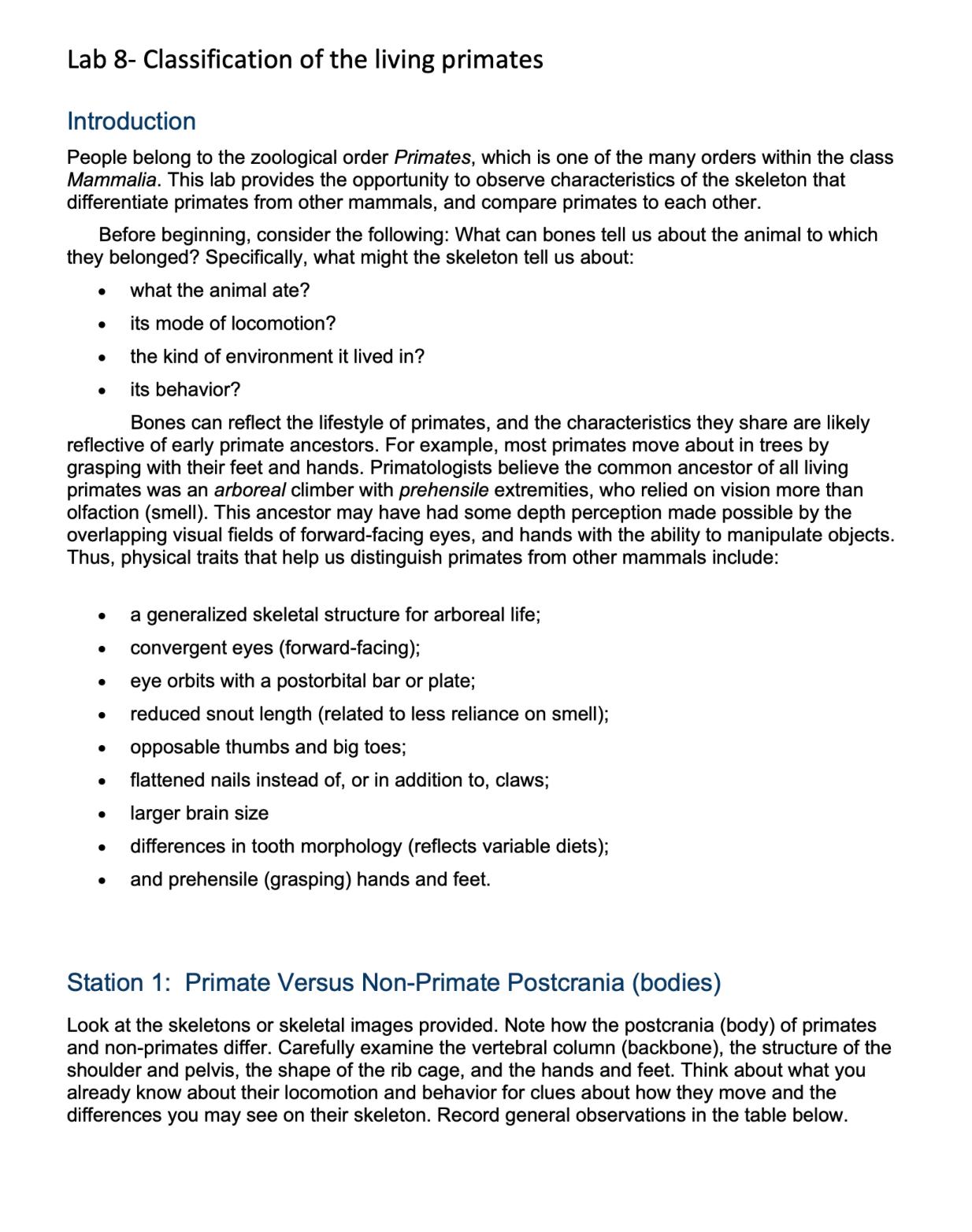
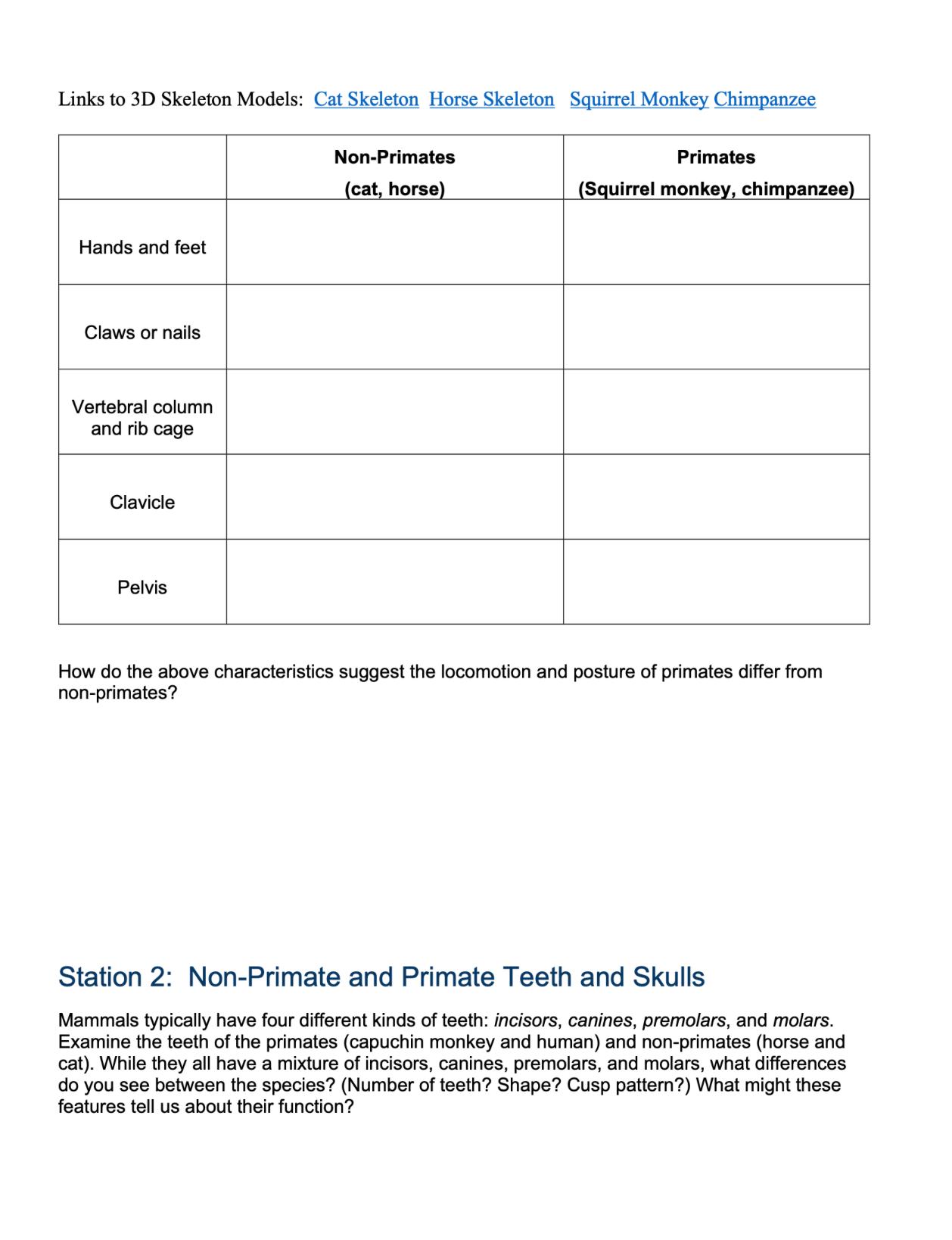

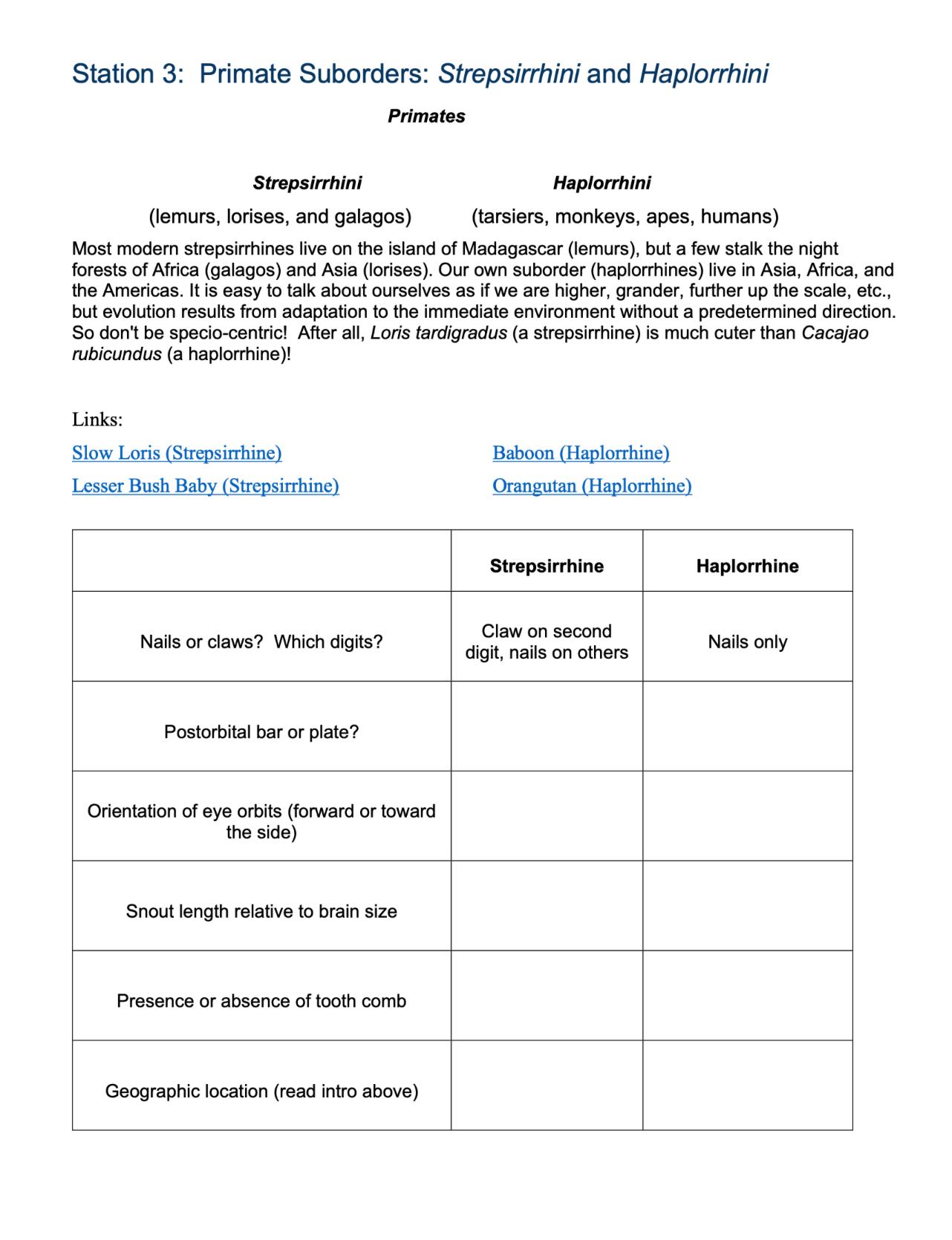
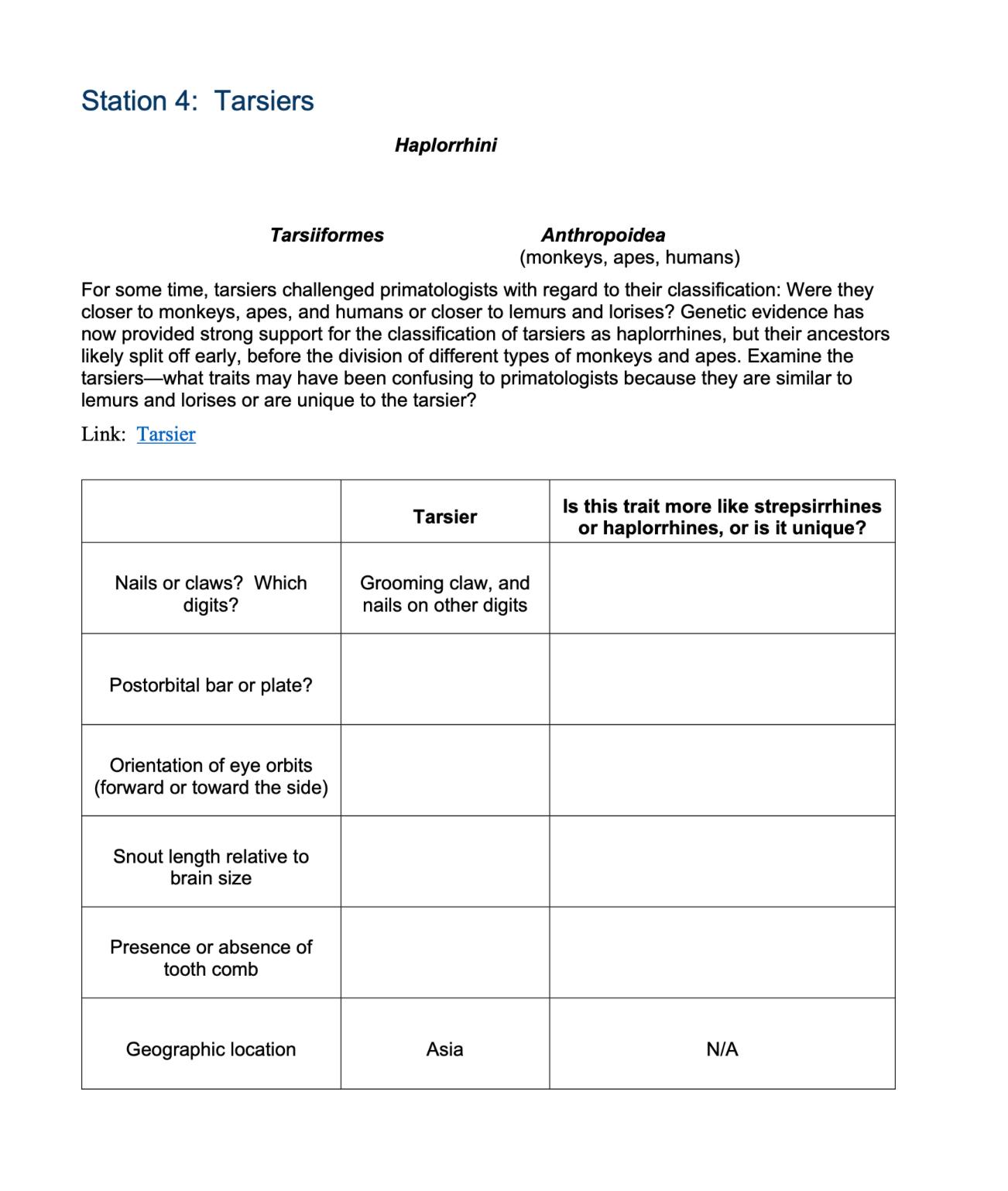
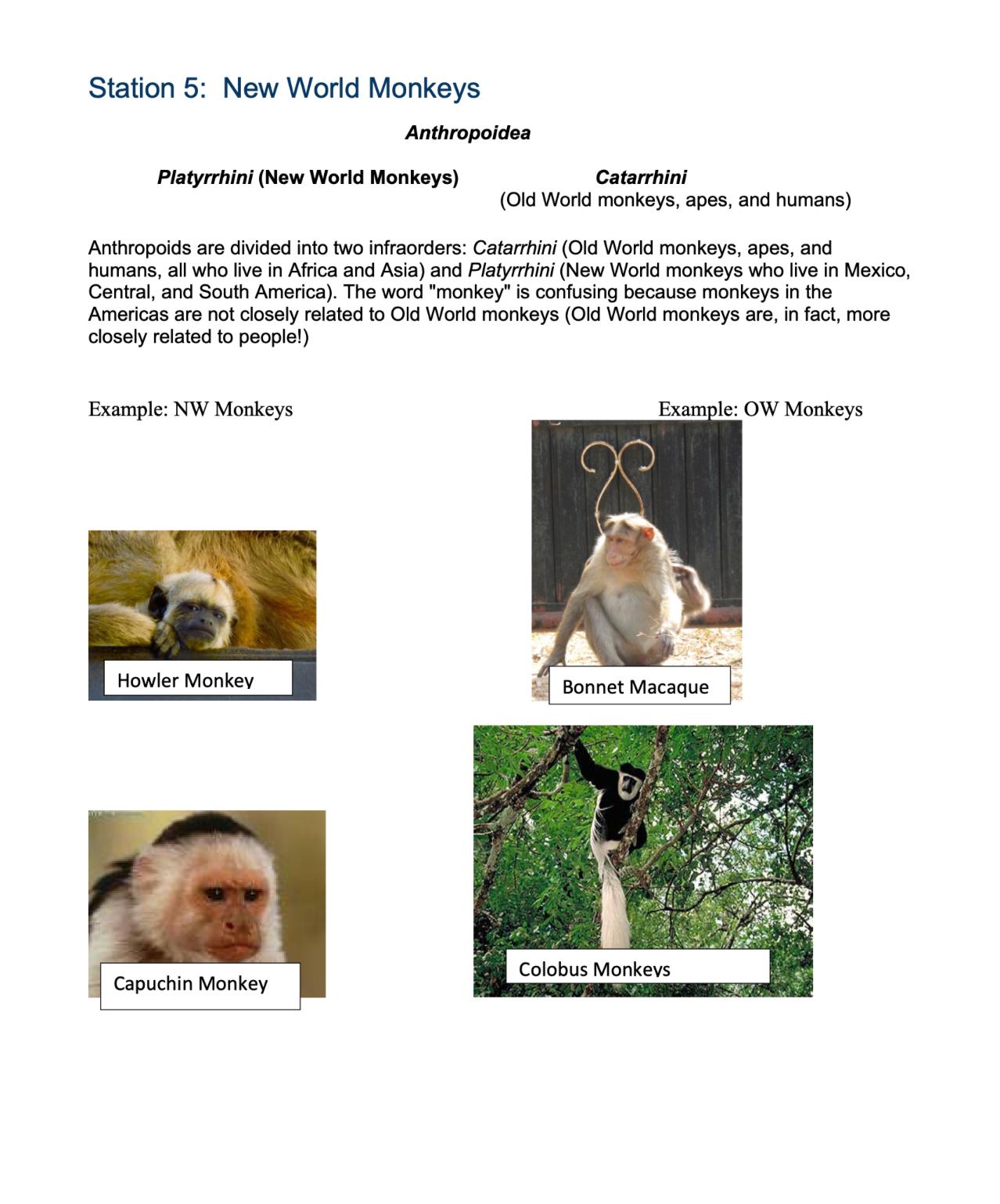
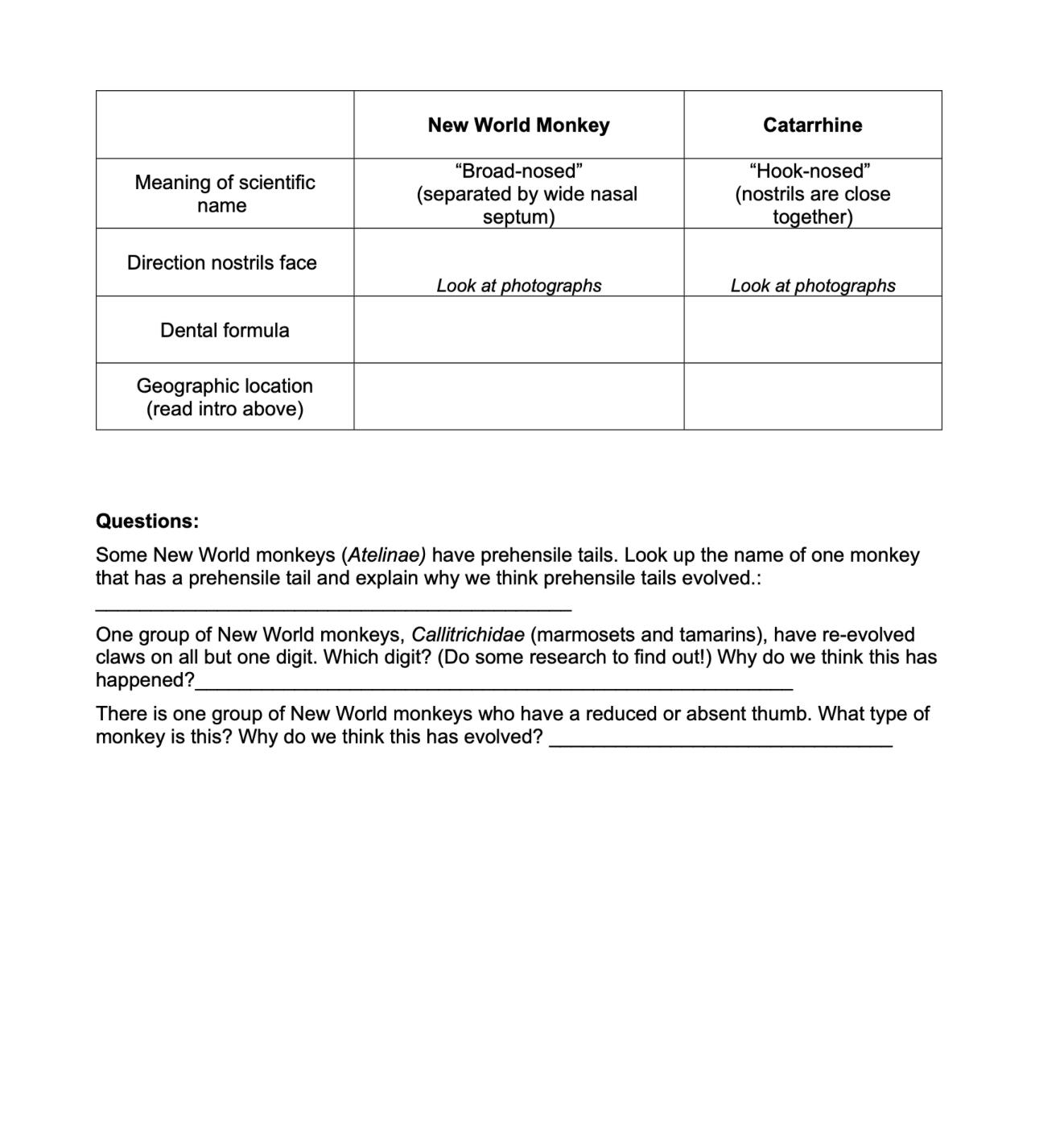
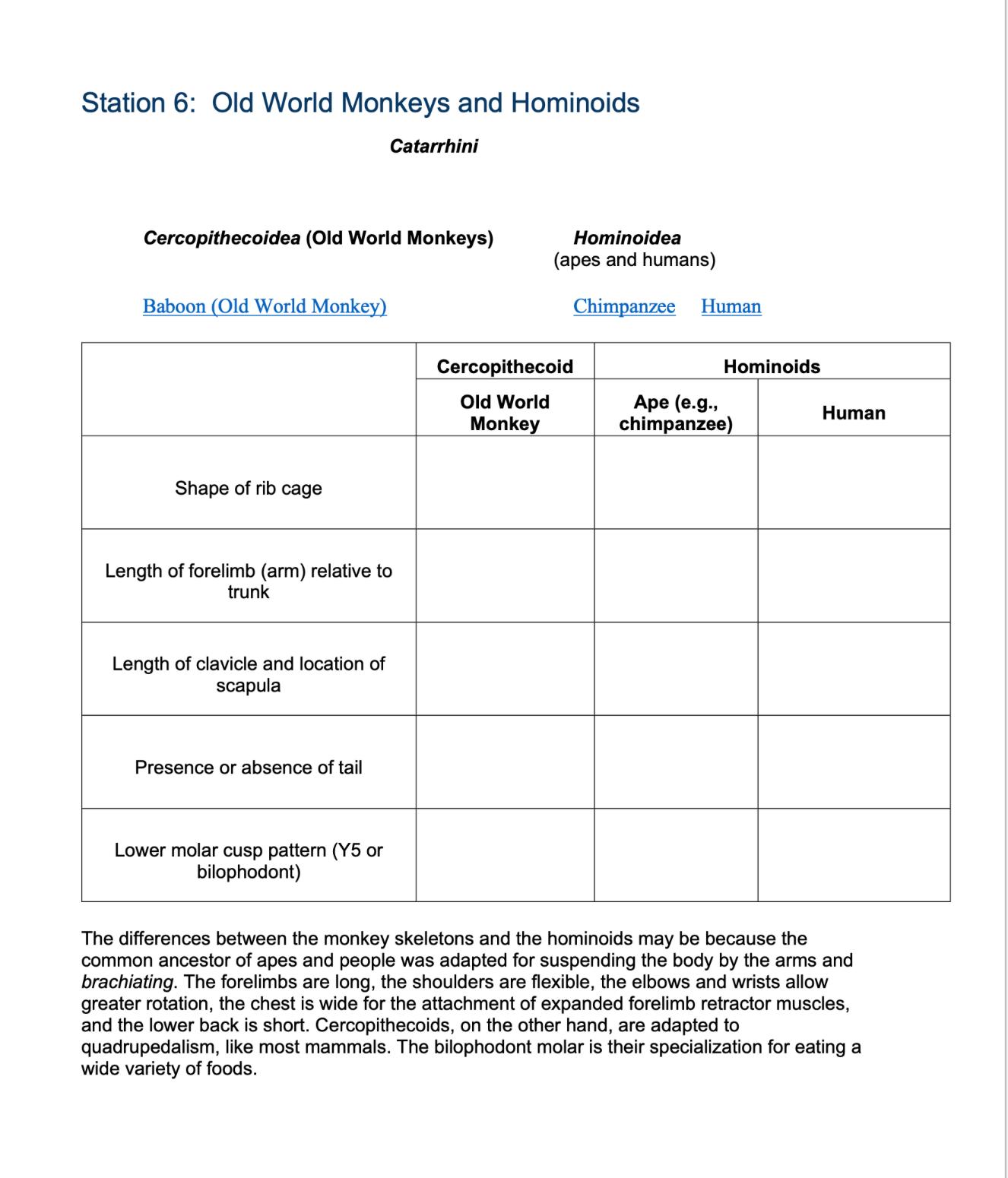
This question is complete please help me with the answer.
Lab 8- Classification of the living primates Introduction People belong to the zoological order Primates, which is one of the many orders within the class Mammalia. This lab provides the opportunity to observe characteristics of the skeleton that differentiate primates from other mammals, and compare primates to each other. Before beginning, consider the following: What can bones tell us about the animal to which they belonged? Specifically, what might the skeleton tell us about: what the animal ate? its mode of locomotion? the kind of environment it lived in? its behavior? Bones can reflect the lifestyle of primates, and the characteristics they share are likely reflective of early primate ancestors. For example, most primates move about in trees by grasping with their feet and hands. Primatologists believe the common ancestor of all living primates was an arboreal climber with prehensile extremities, who relied on vision more than olfaction (smell). This ancestor may have had some depth perception made possible by the overlapping visual fields of forward-facing eyes, and hands with the ability to manipulate objects. Thus, physical traits that help us distinguish primates from other mammals include: . a generalized skeletal structure for arboreal life; convergent eyes (forward-facing); eye orbits with a postorbital bar or plate; . reduced snout length (related to less reliance on smell); opposable thumbs and big toes; flattened nails instead of, or in addition to, claws; larger brain size . differences in tooth morphology (reflects variable diets); and prehensile (grasping) hands and feet. Station 1: Primate Versus Non-Primate Postcrania (bodies) Look at the skeletons or skeletal images provided. Note how the postcrania (body) of primates and non-primates differ. Carefully examine the vertebral column (backbone), the structure of the shoulder and pelvis, the shape of the rib cage, and the hands and feet. Think about what you already know about their locomotion and behavior for clues about how they move and the differences you may see on their skeleton. Record general observations in the table below.
Step by Step Solution
There are 3 Steps involved in it
Step: 1

Get Instant Access to Expert-Tailored Solutions
See step-by-step solutions with expert insights and AI powered tools for academic success
Step: 2

Step: 3

Ace Your Homework with AI
Get the answers you need in no time with our AI-driven, step-by-step assistance
Get Started


